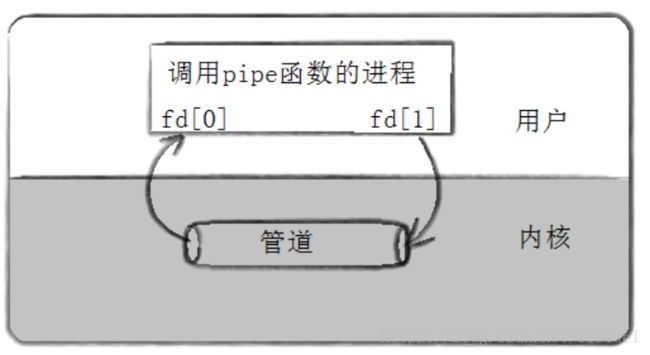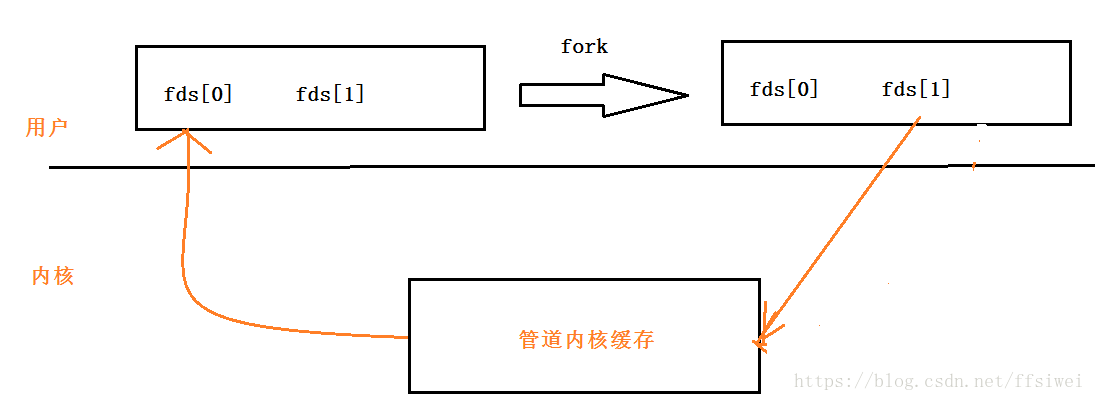命名管道和匿名管道
我们知道进程间是可以通信的。可以达到数据传输、资源共享、事件通知、进程控制等目的。进程间通信主要包括管道、系统IPC,套接字等。
管道分为三种:
- 普通管道:一是单工,只能单向传输 ,二是仅能在父子进程或者兄弟进程中使用。
- 流管道:去除了第一种限制,为半双工,可以双向传递,
- 命名管道:去除了第二种限制 ,可以在很多并不相关的进程 中进行通信。
1、普通管道
int pipe(int fds[2]);//返回值0表示成功,-1表示失败

fd[0]:读 fd[1]:写
子进程往管道中写数据,写数据时要关闭读端
父进程往管道中读数据,写数据时要关闭写端
#include 
2、匿名管道 :
管道的创建

管道文件大小为0,没有情缘关系的文件也能通过管道名,来取到该管道中的缓存。
//创建管道文件
int mkfifo(const char *name,mode_t mode)
//打开管道文件
int fd=open(name,O_RDONLY);读
int fd=open(name,O_WRONLY);写
//read/write,语义和匿名管道一样
利用命名管道实现文件的复制,代码如下:
1)、将文件写入命名管道中
#include 2)、将管道中的数据导入到拷贝文件中
#include 3、匿名管道和命名管道的区别:
匿名管道是由pipe函数创建 并打开的
命名管道是由mkfifo函数创建 的 ,打开用open
命名管道和匿名管道唯一的区别就是在创建的打开,一旦这些工作完成后,它们有相同的意义。
